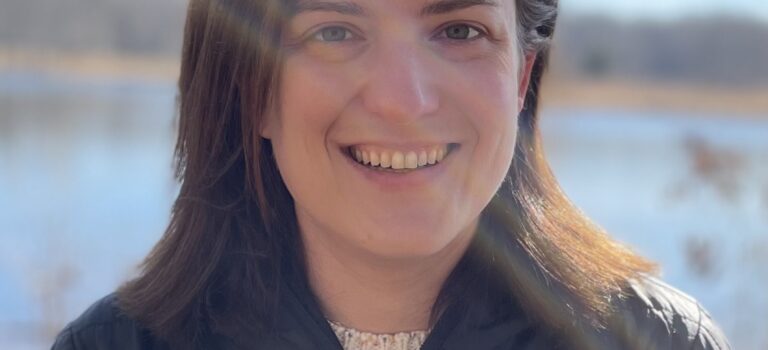Six sets of plants and cut flowers surround my mother in varying stages of life and decay. She sits in silence while I help the movers inventory her things. A ficus holds on to the north-facing window. A poinsettia in red foil hasn’t moved since Christmas, and its curled, dried leaves litter the floor. Standing water smells rank in the iris bowl. Bulbs pop out of a wood planter, packed with straw, supposed to foster new spring growth. Instead it’s swampy—she watered it, forgot, then watered it again, and then again and again.
Like a plant, my mother’s mind wilts, molds, droops. First, little things—dates and times—slipped her mind. She fell victim to fraud. She lost words, and without language, she stopped engaging with friends and family. She forgot how to plug in the blender and how to turn off the oven. She failed a driving test.
Now, movers measure the furniture to see if it will fit in her new apartment in the care home. “This?” they say, pointing to a four decade-old lamp with moth holes in the shade. “This?” to a CD tower, untouched in years. “This? This is a good piece of furniture,” they point to the teak dining room table.
“Let’s try to take as much of it as we can,” I say. Mom sits on the couch, silent with cheeks sagging, biting skin off her fingers. When I hug her, she leans in with her head on my stomach but then abruptly pushes me away.
The movers don’t notice the burst of anger. One of them points: “This ficus is a good, hardy plant.” Its spindly, six-foot branches drink in the suburban sun in the same place it’s sat for decades. “We see this all the time: orphan plants,” they say. Pots that can’t possibly move to a space with three windows instead of twelve. Plants that are easier to throw in the dumpster than stack in a moving truck. “It’s sad,” they say, “to see these thriving, living things left behind.” The movers adopt them, give them a new home and attention. They bring them back to life.
This is the revival I envision for my mother, too. She will move into a building with professional caretakers who understand age and infirmity. She will have everything she needs, from a bistro to a salt water pool and spa. Workout classes, lectures, and concerts all day to keep her busy. A new home to give her water, light, and companions.
Before she forgot how to use her email, she sent notes titled “Memories” with no message, just photos from years past. These images show her holding her grandchildren with a recognition and love unseen now for years. The Christmas cactus blooms pink in the background. Fresh cut lilies extend their stamen and perfume the room. These are echoes from the past: the smiles, the smell, the growth and bloom.
I bring fake peonies to her new home, arrange the stems in a crystal vase, and set it on the sill. The next time I visit, I catch her watering them. The sturdy ficus stands nearby, reaching for its new window. All of us are resilient, despite Mom’s forgetting.
Kristina T. Saccone (she/her) writes short fiction and nonfiction. Her work appears in Fractured Lit, Cease, Cows, Gone Lawn, Flash Flood, Luna Station Quarterly, LEON Literary Review, Emerge Literary Journal, and others. She edits a limited-run online literary journal with stories about caring for our aging parents, called One Wild Ride, and she’s querying an anthology on the same topic. Kristina is also a Randoph College MFA candidate.
The following interview was conducted by Taylor Montaño, our Nonfiction Section Editor for issue 30, via email.
Taylor Montaño: One Wild Ride is a unifying development that allows those that we care about to be safe and cared for. How might the readers of S[r] contribute?
Kristina Saccone: Thank you for this question. I started this project to help writers find community in reading others’ stories and sharing their own lived experience. One way to contribute is to read the stories on One Wild Ride and then share them widely. You can keep up with the project by signing up for One Wild Ride’s weekly newsletter. I also encourage writers to keep writing and publishing on this theme. Once I find a publisher for a printed anthology of new pieces about the topic, I’ll open for submissions. Every one of us is affected by caregiving at some point in life, and it’s important to embrace these narratives in several ways!
TM: The permanence of impermanence is explored within Dementia’s Orphans through the decaying of plants. How did you come to understand that this element would help the reader better understand your message?
KS: I think the pandemic amplified impermanence for a lot of us. In my bubble, we had a five-year old struggling with online kindergarten and my mother who, at a distance, was beginning a steady decline into dementia. I had no control over whether my son would flourish, and the situation with my mother was the definition of unpredictable; we suspected something was wrong, but it took a series of crises to be certain she was ill.
My mother always loved flowers. It was part of the rhythm of her life, now turned upside down. So, when I saw my mother’s plants in such decay, I was struck by the parallels between her dying houseplants and her declining mind. Despite well-intentioned caregivers who tried to stop her, she insisted on watering them again and again and again. By overfeeding them, she interrupted their cycle of nourishment. When she moved and we faced throwing them in the dumpster, I realized that the plants had actually been abandoned long ago by a mind that didn’t make sense anymore.
Ironically, I find some stability in the impermanence of living things. Plants, whether in our garden or our homes, are a regular reminder that we can grow something anew from a seed; with nourishment, it flourishes; and at the end of its season, it decays and returns to the earth. That life cycle actually brings me hope.
This year before the frost, we planted allium bulbs. They will blossom in the spring. They will live for a few weeks and then, with summer’s warmth, decay. The cycle of growth mimics how humans hope to live our lives: we are born, we live, and then we die—all things being, hopefully, mostly comfortable, predictable. It is never quite that straightforward though, is it?
TM: How does writing your experiences fulfill closure, both internally and externally?
KS: Writing about my experience with my mother is a necessary thing; I often feel like I’d like to move on from it, write about something new or more creative, but I always return to it. It sometimes brings me closure, but often in the process of writing, I’ll discover connections or truths about the situation that I may not have noticed before. An example from this piece is, as my mother moved, I felt grief for all the things she had to leave behind and the home that we were losing as a family. When one of the movers called the plants “orphans,” it helped label that grief in the moment. But later, writing about it, I realized that the mover had this label in her lexicon because she took personal care with families through these moves. She had deep respect for the lives they were leaving behind. As I wrote, I tried to recenter my experience outside my own grief, tried to see through the eyes of those who do the moving, who experience these types of losses day after day after day. It gave me empathy for this work and immense gratitude for the people who help families like mine through life’s difficult transitions.
TM: At the end of your piece, there is a feeling of hope and reassurance that is undeniably pulled from the reader. What words—aside from your finishing lines—would you like to give to those of us that are in need of support during these situations?
KS: I started this project because, at the beginning of this journey with my mother, I found comfort and support in reading flash-length stories about caring for our aging parents. It was hard to find these pieces scattered across the internet, so I created One Wild Ride to compile some of the reprints in one place. I hope that those who are in need of support can find it there, through the words of others who have been through similar experiences.
TM: Would you mind further discussing how nature has affected your writing in terms of personification, imagery, and syntax?
KS: Before her dementia, my mom liked to remind me how much I hated the outdoors as a child. Then, after moving from the east coast and living in Colorado for 15 years, I adapted to the bluebird skies, the dry climate, the crystalline snow. I learned to love low-water plant environments, with deciduous trees, grasses, alpine Columbine flowers, twin Goldfinches in the neighborhood trees, the rhythm of the breezes. These memories—which are now just images—flow through much of my writing.
When I moved back to the east coast about five years ago, the contrast in climate and nature was disorienting for me. I went from arid to humid summers; tall blowing grasses to tangles of hanging vines like a rainforest; from drought to hurricane conditions. It all felt heavy to me, this wet and gloomy environment, also mirroring the sagging plants overwatered by my mother. Nature here in the mid-Atlantic feels Gothic, and lends to lush-but-often-haunted personifications of people and spaces.
TM: Do you often do research on the plants you write about to better understand how it can benefit your writing?
KS: I’m a former journalist, and one of the old habits I can’t shake is the need to research details in my creative nonfiction. It’s sometimes my downfall because researching for accuracy can go on ad nauseum—sometimes to the detriment of the writing. My process for this story began with a strong image that is linked to a deep emotion. I find that when my writing begins that way, research sometimes derails whatever has inspired me. So for this piece, I went as far as to ensure I was naming the plants correctly, but I left it at that.
A few years ago, I wrote a piece of creative nonfiction about a rogue tomato plant that popped up unexpectedly in my flower bed in October and November. I was fairly sure it would be a story about climate change, but I didn’t want to assume that tomatoes don’t grow that late in the year in my part of the U.S. I did a lot of research about climate zones, tomatoes, and the changing seasons. I wouldn’t have been comfortable putting that story out for print without that research.
So, I believe that sometimes research is absolutely necessary in creative nonfiction, but other times, if you feel it getting in the way of your writing process, I think it’s okay to let it go.
Kristina Saccone can be found on Twitter at @kristinasaccone and @one_wild_ride.



